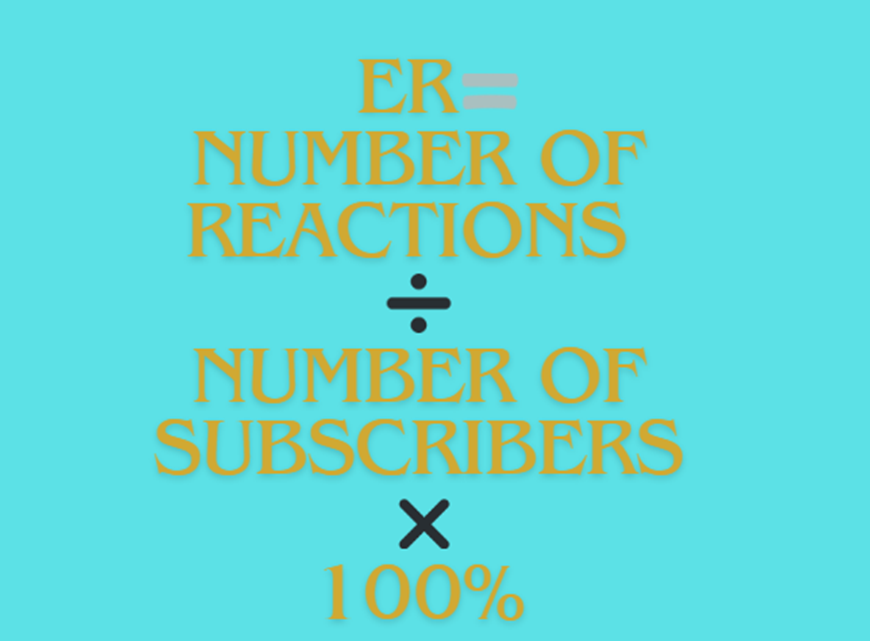In almost every writer’s vacancy, in the list of necessary skills, you can find – “creative writing skills.” The ability to write non-standard content and come up with good writing ideas is now valued much more than diligence and following instructions.
Let’s look at how to increase the level of creative writing in order to maximize content marketing ROI. We will provide ways to develop the skill and tell you how to keep yourself in “creative shape” by doing special exercises.
Creative writing tips that you should use
If you follow the following tips, your creative writing will definitely improve:
- Understanding the purpose: Depending on the purpose, the style and structure of the text may differ. Therefore, first define in a few words the logical justification of your message – who to inform and what to inform.
- Structure and organization: A clear structure is an important element of a quality text. The introduction, main part, and conclusion are the “skeleton” of any text. Professional copywriters recommend always making a plan before writing a text and avoiding multiple links. The text is most pleasant, readable, and understandable when its structure is logical. Readers like meaningful and reasonable content more than a “mess” of text without any formatting or coherence in it.
- Correctness and grammar: Avoid grammatical and spelling errors. Mistakes can distract the reader from the text itself and affect its perception. Try using online services to check grammar and spelling. Few people will like the text that contains lots of mistakes.
- Clear and distinct language: Use simple and understandable language. Avoid complex and confusing sentences. Remember that your task is to convey the idea to the reader as clearly as possible and not to force “decipher” the mess from the text.
- Practice and practice: Any skill cannot be improved without practice. Therefore, to develop creative writing skills, you need to write and write. Make it a rule to write at least one short note every day, and you will see how your style and confidence in the text will improve over time. Reading quality literature also contributes to this skill.
Open up your creativity with helpful exercises

Photo by Pixabay from Pexels
You need to boost your creativity to come up with original concepts and catchy slogans and present cool writing. But don’t worry; you can train this skill, just like muscles. Catch eight exercises to develop your imagination and fantasy. Do them alone, with colleagues during breaks, or play with friends instead of board games.
Two random words
The gist. Take two completely unrelated words and come up with a story that will unite them.
The goal. You will develop creative thinking and the ability to create connections between different concepts and come up with interesting plots.
Example. You have chosen the words “doll and car.” You can write a story like this:
Driverless cars have become a mass means of transportation, and special robot dolls have replaced drivers. They drive safely, know all the rules, and show respect for customers. But one day, something strange happened. One of the dolls broke down, and instead of the usual “Good afternoon! Fasten your seat belt, please,” she said: “Help, I’m tired.” The passenger immediately left a request for support. The doll was sent for a technical inspection, and it was realized that she had developed the ability to feel tired. Now, all doll drivers get vacations.
Tip. Start with a couple of words and gradually add new ones, complicating the story.
Gibberish
The gist. Make up your own language and try to write in it.
The goal. It is a good exercise for developing creative writing skills.
Example. You can make up your own words using existing words as a base. For example, “cat” can become “catar,” “house” – “housis.” The phrase: “Hello, how are you?” can sound like “Halli, havis arek youm?”
Tip. Start with simple phrases, gradually making the language more complex. Let go of control over words, and just let your imagination run wild.
Deciphering hieroglyphs
The gist. Find images of hieroglyphs, such as Chinese or ancient Egyptian ones. Try to decipher them by making up your own story.
The goal. You will develop interpretation and imagination skills.
Example. There is a hieroglyph that resembles three trees. You can make up a story about them.

Hieroglyph [sēn] — forest, thicket
Three trees grew in a magical forest: oak, birch, and pine. One day, dark wizards wanted to make an oak tower and cut down the tree. The birch, feeling threatened, began to whisper with its branches and called the gnomes for protection, and the pine turned to the wind, which carried the wizards to the Desert of Powerlessness. There, they lost their human appearance and became mere grains of sand, and the trees discovered superpowers in themselves. All except the oak.
Tip. Try to learn more about the history and meaning of hieroglyphs.
Rethinking proverbs
The gist. Rephrase a well-known proverb, for example, through a metaphor or image.
The goal. You will practice abstract thinking and the ability to find new meanings in familiar things.
Example. Instead of “A journey of a thousand miles begins with a single step,” you can write, “We needed to do a big renovation in the house. We started with painting the walls.”
Tip. Try using different expressive means, such as metaphors, allegories, and hyperbole.
Images around
The gist. Look for human images in the surrounding world: in the landscape, architecture, and nature.
The goal. You will develop observation skills and the ability to see the unusual in the ordinary.
Example. These can be holes in the ground or lines on the bark of a tree.
Tip. Observe the world around you carefully and try to see something unusual in ordinary things. Write about what you saw.
“What if?”
The gist. Think of ten “What ifs” and make up stories.
The goal. You will develop the ability to imagine alternative realities and find new ideas.
Example. “What if the world experiences a drought and everything disappears?”
By the time the drought occurs and everything disappears, people will not need water. Their organs will be robotic, completely repeating the physiology and anatomy of a human. It is easy to do without water and food.
Tip. Don’t limit yourself to one answer to the question “What if?” Try to come up with several different stories.
The unreal is real
The gist. Invent unusual animals and speculate about how they would live if they really existed.
The goal. You will develop a creative imagination.
Example. “What would happen if a penguin had hooves?”
Nordic, the penguin was an unusual penguin: instead of paws, he had hooves. That’s why he easily moved across icy expanses and overcame difficult areas. However, Nordic felt isolated among other penguins. One day, when a flock of penguins got lost in a snow tunnel, Nordic used his skills to dig a path to safety. The flock realized that his hooves were useful, and since then, Nordic has become a hero.
Tip. Think about how this animal would evolve and what its habits, diet, and lifestyle would be.
Role
The gist. Think about how a person with a specific profession would solve this or that problem.
The goal. You will develop flexibility in thinking and the ability to find effective solutions.
Example. “What would an influencer John Smith do if he had a flat tire?”
With his optimism and composure, he will immediately turn on the camera and take off his scarf from his shoulder so as not to stain it. He will not have a spare tire, so he will have to ask his subscribers for help. However, this is such cool content, and he will definitely record a video about what happened. He will say that everything is for the best. While they help him with changing the tire, John will use this time usefully. He will write to advertisers to discuss the terms of cooperation and come up with new ideas for TikTok.
Tip. Look at the problem from different angles to develop different solutions.
Use your creative writing skills in content marketing
After developing your creative skills, it is important to learn some basics of content marketing to make those skills work properly.
Develop a content strategy
The content marketing manager determines what exactly the company will do. To do this, they “marry” the interests of the target audience with the product of the company they work for. As a result, a content strategy is obtained that allows you to attract customers and lead them to the product.
A good content strategy attracts customers, increases brand awareness, communicates certain values, and attracts new employees. Depending on the task, the content and work with it will be different. The goal may change during the promotion process, but it is still worth defining it at the beginning.
You need to study your target audience. How will your content solve their problems or meet their needs? Also, you need to study your competitors. Analyze what content other companies in your niche are making and how the audience reacts to it.
Collect a semantic core
Thanks to SEO optimization, content works more efficiently. It will help raise your blog or a separate article in search results, which means more potential customers will visit the site. Collect a semantic core – keywords and phrases on your topic that your target audience often searches for in search engines.
Prepare a content plan
The content plan may look different, but it usually includes the placement platform, the topic of the publication, and the release date.
Write and publish content
Now comes the most enjoyable part – writing content. Creative writing skills will come in handy here. Just remember that creative writing skills are not enough to attract customers and grow your SEO metrics. You also need to know how to use keywords and tags correctly, how to structure all the information, and how to make it understandable, even for a person who encounters the topic you are writing about for the first time.
Analyze content marketing results
Google Analytics helps analyze content on a blog or website and built-in profile or group statistics on social networks. Check out key metrics to understand how effective your content marketing is:
Engagement (ER) — likes, comments, reposts, and other reactions. It shows how close and interesting your content is to the audience. If engagement is low, you may want to consider other publication topics or change the presentation.

ROI — profitability ratio. It shows whether promotion through content pays off and whether it brings profit.

Conversion into a lead and a client. A user can leave a request or make an order after reading a post or article on a blog. To distinguish clients who came through content marketing from all the others, you can add UTM tags to publications – these are tags that track the source of traffic.
Optimal figures for each indicator depend on the business sector, publication platform, and stage of content marketing. For example, the level of engagement in a B2B company’s blog and the account of a clothing store will be different. When you are just launching corporate media, the profitability ratio may be below 100%. However, this does not mean that content marketing does not work for you – perhaps it will start to pay off in the future.
To sum up
Creative writing is a process that takes time, patience, and constant development. Follow our advice, practice creativity, and write texts regularly, and don’t forget about content marketing. After all, it doesn’t matter how well and creatively you write if it doesn’t bring any results.
Finally, remember the importance of patience and persistence. Good creative writing is a result of hard work and constant practice. You may not create a masterpiece right away; this is normal. After all, even the greatest writers started with simple sentences.